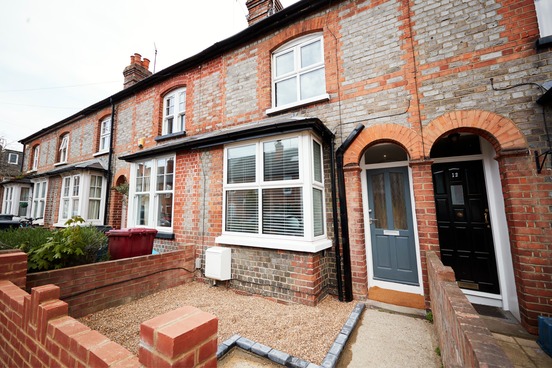
There is a lot for landlords to remember when taking on a new tenant and starting a tenancy. If you don’t hold to your legal obligations when starting a tenancy, you can be fined, prosecuted and prevented from serving your tenant a Section 21 Notice at the end of a tenancy. This 4 part blog series will break down all you need to remember at the start of a tenancy. We’ve kept it as brief as possible so it’s easy to work through.
Not only that, you can download the full blog series, plus a tick-box checklist for all your start of tenancy tasks here:

Don’t forget to check the specific health and safety regulations relating to your property and tenant type. While this checklist will cover those with buy to let properties there may be additional rules around HMOs and non-standard tenancy types.
While we’ve covered the rules that apply in England things may be different if you’re renting property in Scotland, Wales or Northern Ireland. While there is bound to be some overlap, we haven’t delved into any specific requirements for Welsh, Scottish or Irish rentals.
In most cases it is wise to have a short period of inoccupancy between tenants. This allows you to carry out work on the property that would be difficult to do with tenants in situ.
In this post we’re focussing on the elements of the checklist that you should take care of before you even think about finding a new tenant. They are a mixture of things that are legally necessary (those marked with an asterisk*) and those that just make sense to do or at least consider especially if the property will be unoccupied between tenants.
Fitting Smoke and Carbon Monoxide Alarms in Your Property*
These two points of the checklist are a legal requirement no matter what kind of property you are renting out and no matter the tenancy.
Before you even consider finding a tenant you must make sure that your property has working smoke alarms on each storey. You also need to provide working carbon monoxide alarms in any rooms that have solid fuel installations (like wood burning stoves).
If you don’t check that the required smoke and carbon monoxide alarms are working at the start of the tenancy you could face fines of up to £5,000. These measures save lives and aren’t difficult or expensive to implement or maintain.
Getting HMO Fire Safety Right*
Fire safety regulations in HMOs are different to standard buy to let rules. What is required will differ from building to building and from town to town. Some of the more common elements of HMO fire safety are:

- Carrying out a full fire safety risk assessment.
- Ensuring common escape routes are kept clear.
- Provision of a fire barrier between living and communal areas.
- Better fire detection and warning systems that may need to extend into individual bedrooms.
- Emergency escape lighting.
- Firefighting equipment and facilities such as fire blankets or extinguishers.
- Fire notices and exit signs.
HMO landlords are responsible for maintaining these safety features as well as providing them in the first instance.
Fire safety in HMOs could be a whole guide, so we won’t cover all elements of it here. To stay on the right side of the law familiarise yourself with HMO fire safety with this Property Investments Fire Safety article.
Are You Letting Your Property as Furnished or Not?
Before you start looking for a tenant you should decide whether you are going to let the property as fully or partially furnished or whether you’ll let it as unfurnished.
For most landlords who have been operating for a while there won’t be anything to do on this point unless you’re changing your operating model. For new landlords though you’ll want to make this decision before finding a tenant for obvious reasons.
If you are letting the property furnished, put furniture into the property before you start showing the property to prospective tenants. If you’re letting unfurnished, make sure you remove anything from the property that won’t be there when the tenancy starts. This way the tenant can see exactly what they’re getting with the property and there will be no dispute over items that are added or removed after the viewing and prior to the tenant moving in.
Consider Taking the Time to Decorate the Property
The property may look fine with just a few run-of-the-mill scuffs and scrapes, but these signs of wear and tear build up over time and make the property look grubby. If you have the kind of tenants that generally stay long term, give the property a lick of paint before you install new tenants.
It is far easier to paint a property (or a room) while there is no tenant in it. Prospective tenants are more likely to be attracted to a property that is clean, fresh and cared for. Keeping on top of the décor between tenants is a lot easier and cheaper than having to do a huge overhaul every few years.
Complying with the Fitness for Human Habitation Act*
On 20th March 2019 the Homes (Fitness for Human Habitation) Act was passed into law. This was designed to empower tenants to deal with sub-standard housing and to discourage landlords from shirking maintenance responsibilities.
The legal obligations for landlords under this act did not change at all, instead tenants were given more powers to deal with landlords who rent out properties with lax safety standards.
If you maintain your properties well, you should have nothing to worry about, but before installing a new tenant you should run though the criteria to make sure your property is safe.
A property is considered unfit if:
- The building has been neglected and is in a bad condition.
- The building is unstable.
- There’s a serious problem with damp.
- The property has an unsafe layout.
- There’s not enough natural light at the property.
- There’s not enough ventilation at the property.
- There is a problem with the supply of hot and cold water.
- There are problems with the drainage or the lavatories.
- It’s difficult to prepare and cook food or wash up.
- Any of the 29 hazards set out in Schedule 1 of the Housing Health and Safety (England) Regulations 2005 are evident.
Visit the government website to learn more about your obligations under the Homes (Fitness for Human Habitation) Act.
Staying Compliant with GDPR*
The General Data Protection Regulations apply to most landlords. They determine and govern how you store and process the personal data of prospective and current tenants.
When you collect and store the personal information of your tenants you will be required to pay a data protection fee to the ICO (Information Commissioner’s Office).
There are some (but not many) exemptions. To find out whether you are exempt from the fee you can use the ICO’s fee checker here.
If you use a letting agent, don’t assume this makes you exempt. A letting agent can help you comply with GDPR from a paperwork perspective, but if you’re storing any data about your tenant, you’ll still need to register with the ICO and be compliant with the rules.
ICO registration can be done online and doesn’t take that long. The fee you pay is usually dependent on the size of your business. Most landlords can expect to pay a nominal annual fee.
If you’re GDPR compliant, you’ll already be registered, and you’ll have a good idea of how to treat your tenant’s data. If you’re a new landlord though or this is the first time you’re hearing about GDPR you’ll need to make sure that you know how and why this applies to you and how to safely process your tenant’s data before you take a tenant on.
If you need more information on becoming GDPR compliant or you want a refresh on how the rules apply to you, this GDPR guide from Landlord’s Guild is very comprehensive. The guide from Landlord’s Guild also contains useful tools like a downloadable GDPR audit spreadsheet and links to further information.
Once you’ve registered with the ICO and familiarised yourself with GDPR and data processing rules you’ll need to make sure that any tenancy agreement you use details how you’ll process your tenant’s data, usually in the form of a privacy notice.
If you use an application for accommodation you should issue a privacy notice to your tenant with this document. In a nutshell, you want to make sure the tenant receives a privacy notice before your store any of their data. So, before taking on any new tenants check any paperwork you use regularly for GDPR compliance.
MEES – Is Your EPC Rating High Enough?*
Since April 2018 Minimum Energy Efficiency Standards have been introduced. These mean that landlords have an obligation to ensure that their properties achieve a minimum EPC rating of E or higher for all new tenancies (and for all existing tenancies from April 2020) or risk a penalty of up to £5,000.
Before you can rent out your property, you’ll need to make sure that it has an EPC rating of E or higher. If the EPC rating is lower than an E you may be expected to spend up to £3,500 to increase the rating before you can rent the property out or you’ll need to apply for an exemption. This EPC guide contains further information.
In part two of ‘A Start of Tenancy Checklist for Landlords’ we’ll be talking about a crucial step in the tenant finding process that is sometimes overlooked. These are the steps that need to be taken before accepting a tenant to live in your rental property.
To access the full checklist now, download it here:




